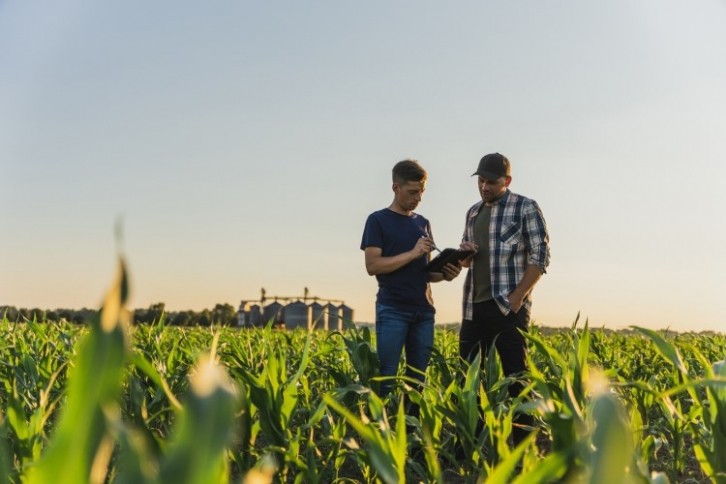US farmer sentiment weakest since COVID-19 pandemic

The Purdue University-CME Group Ag Economy Barometer Index fell 12 points to 88, with the Current Conditions and Future expectations indices also falling.
According to the September 2024 survey, farmers are most concerned about commodity prices, input costs and interest rates.
Financial expectations also weakened for a third month in a row and on the year, with producers considering the current conditions a poor time to make large investments.
Concerns about trade also dominated, with just around a quarter of those surveyed (26%) stating they expected US agriculture exports to rise in the next 5 years – ‘the least optimistic perspective’ since 2019.
The upcoming presidential election is also causing uncertainty among producers, with 78% stating they were concerned that post-election there would be government policy changes that affect their farms.
What were US producers’ top concerns in September?
The latest producer survey revealed that the top concerns were linked to input costs and lower commodity prices. Favorable crop prospects this year have meant corn and soybean prices hit multi-year lows this year; farmers selling high volumes of old crop inventories has also contributed to the trend.
On production expenses, the latest USDA ERS data shows that costs across feed and seed have declined in 2024 but remain elevated compared to pre-pandemic levels; with pesticides, fertilizer, and fuel and oil costs also down compared to 2023.
The third biggest concern for producers was interest rates. US consumer price inflation fell 2.4% in September (from 2.5% last month), with Federal Reserve policymakers indicating last week that a rate cut may be on the horizon. The Fed is targeting a 2% inflation.
Farmland values expected to weaken
In another notable piece of data from the most recent producer survey, the Short-Term Farmland Value index declined to a reading of 95, down 10 points, dipping under 100 for the first time since 2020. This marks a shift from a positive to a weaker outlook, with more producers now expecting values to stay the same rather than rise. The Long-Term Farmland Values index remained positive, however, remained upbeat, rising 5 points month-on-month to 147.
Authors James Mintert and Michael Langemeier commented: Concerns about low commodity prices coupled with high input costs leading to poor financial performance expectations weakened farmer sentiment for the second month in a row. This month’s sentiment decline pushed the Ag Economy Barometer index below 100, indicating farmer sentiment is lower than during the barometer’s base period of late 2015-early 2016 when farm incomes were very weak.
“Producers expect markedly worse financial performance for their farms in the upcoming year compared to their expectations at this time last year. Weak farm income expectations combined with lingering interest rate concerns and a pessimistic agricultural export outlook helped push the Short-Term Farmland Value Expectations Index below 100 for the first time since 2020.”
Crop progress
According to the latest USDA ERS crop progress report (released Oct 7), 30% of corn and 47% of soybean has been harvested. 87% of corn is rated 'mature' with 49% of the crop considered 'good', 23% - fair; 15% - excellent; 8% - poor and 5% - very poor.
Leaves have dropped in about 90% of the total crop, with 51% of the harvest rated 'good'; 26% - fair; 12% - excellent; 8% poor and 3% - very poor.
For the most up-to-date data, visit the USDA ERS website.










